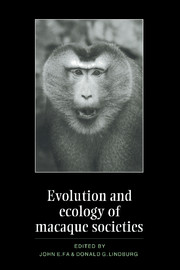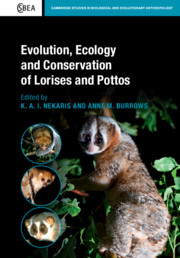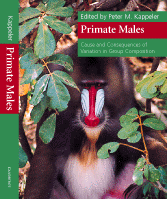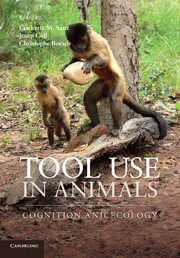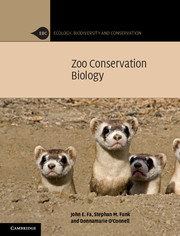Evolution and Ecology of Macaque Societies
The genus Macaca is the most widely distributed of nonhuman primates and is found in twenty countries in Southeast Asia and North Africa. Over the comparative short time span of five million years, macaques have evolved diverse forms, from long-tailed arboreal types to robust terrestrial animals, and inhabit a variety of habitats. Although macaques are probably one of the most studied monkeys both in the wild and in captivity, data from long-term studies and pioneering work of little-known species are only just emerging. In this book, world authorities on macaques interpret recent research and present up-to-date syntheses of many aspects of macaque ecology, evolution, behavior and conservation.
- Macaques widely studied in medicine, behaviour and evolutionary terms
- Brings together most of the major workers on Macaques
Reviews & endorsements
'… an excellent source of information on the variety and adaptability of this primate group.' Trends in Ecology and Evolution
'… bang up to date.' New Scientist
Product details
November 2005Paperback
9780521021715
616 pages
236 × 157 × 33 mm
0.852kg
107 b/w illus. 87 tables
Available
Table of Contents
- Preface J. E. Fa and D. G. Lindburg
- Part I. Biogeography and Evolution:
- 1. Evolutionary relationships of the Macaques G. A. Hoelzer and D. J. Melnick
- 2. Genetic relatedness between populations of Macaca fascicularis on Sumatra W. Scheffrahn and J. R. de Ruiter
- 3. Secondary intergradation between Macaca maurus and M. tonkeana, and the species status of M. togeanus J.W. Froelich and J. Supriatna
- Part II. Population Biology, Ecology and Conservation:
- 4. A comparison of ecological strategies of Pig-tailed Macaques, Mandrills and Drills J. O. Caldecott, A. Feistner and L. Gadsby
- 5. A comparison of Rhesus Macaques in temperate and tropical environments J. O. Caldecott, A. Feistner and L. Gadsby
- 6. Demography and dynamics of Barbary Macaque troops in different habitats N. Menard and D. Vallet
- 7. Grouping patterns and group composition in Macaca nigrescens A. Kohlhaas and C. H. Southwick
- 8. Socioecological dynamics of Japanese Macaque troop ranging T. Maruhashi, Y. Takahata and H. Takasaki
- 9. Riverine refuging by wild Sumatran Long-tailed Macaques (Macaca fascicularis) C. P.van Shaik, A. van Amerongen and M. van Noordwijk
- 10. Comparison of provisioned and wild Long-tailed Macaques B. Wheatley, M. Gonder and D. K. Harya Putra
- 11. Inter-regional and inter-seasonal variations of food quality in Japanese Macaques N. Nakagawa, T. Iwamoto, N. Yokota and G. Soumah
- 12. Population management and viability of the Gibraltar Barbary Macaques J. E. Fa and R. Lind
- 13. Eco-ethology of Tibetan Macaques at Mt. Emei, China Q. Zhao
- Part III. Mating and Social Systems:
- 14. Differential reproduction in male and female Barbary Macaques A. Paul and J. Kuester
- 15. Reproductive behaviour of captive Lion-tailed Macaques D. J. Lindburg
- 16. Sexual behaviour and mating system in wild Pig-tailed Macaques in West Sumatra T. Oi
- 17. Determinants of reproductive seasonality in Japanese Macaques L. Fedigan and L. Griffin
- 18. Behaviour of mixed species groups of macaques F. D. Burton and L. Chan
- 19. The population genetic consequences of Macaque social organisation and behaviour D. J. Melnick and G. A. Hoelzer
- 20. Variation in social mechanisms by which males attain the alpha rank among Japanese Macaques D. S. Sprague, S. Suzuki and T. Tsukahara
- 21. Life history of females in a wild population of Yaku Macaques D. A. Hill and N. Okaysu
- 22. Twenty year social history of a dominant Stumptail Macaque matriline R. Rhine and A. Maryanski
- 23. Branch shaking and related displays in wild Barbary Macaques P. T. Mehlman
- 24. The interplay of kinship organisation and facial communication in the Macaques A. Zeller
- 25. Vocal communication in Macaques M. D. Hauser.

